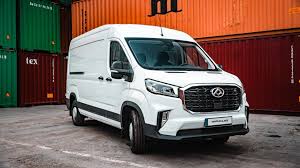
Introduction
In recent years, delivery services have become an integral part of daily life, significantly impacting how businesses operate and consumers shop. The shift towards online shopping, accelerated by the COVID-19 pandemic, has highlighted the importance of efficient and reliable delivery options. As consumers increasingly expect faster and more convenient delivery solutions, understanding the evolution and future of delivery services becomes crucial.
Current Trends in Delivery Services
The global delivery market has seen substantial growth, driven by advancements in technology and changing consumer behaviour. A report from Statista indicates that the global courier and delivery services market was valued at approximately £346 billion in 2022 and is projected to expand significantly in the coming years.
One major trend is the rise of same-day delivery options, which many retailers are now incorporating to compete for online shoppers. Companies like Amazon and Walmart are spearheading this movement by investing in logistics and leveraging local fulfilment centres to ensure rapid delivery times. In addition, many smaller businesses are partnering with delivery platforms to enhance their shipping capabilities.
Technological Innovations
Technological innovations are also shaping the delivery landscape. Automated delivery solutions such as drones and robotics are no longer futuristic concepts but are being tested and implemented in various markets. For instance, companies like Zipline are already using drones to deliver medical supplies in remote areas, effectively reducing delivery times and costs.
Moreover, the integration of Artificial Intelligence (AI) in managing logistics is allowing companies to optimise delivery routes, reduce fuel consumption, and improve the overall efficiency of supply chains. Additionally, the use of mobile applications enables consumers to track their deliveries in real time, enhancing the customer experience.
Challenges Facing Delivery Services
Despite the growth and advancements, the delivery sector faces several significant challenges. One of the primary issues is the impact of environmental concerns. As delivery services increase, so does their carbon footprint. Companies are now under pressure to adopt more sustainable practices, such as using electric vehicles and reducing packaging waste.
Furthermore, the recent supply chain disruptions have shown how vulnerable delivery networks can be, especially during global crises. Addressing these vulnerabilities and building resilient systems will be crucial for the industry’s future.
Conclusion
The delivery industry is at a crucial juncture, marked by rapid advancements and changing consumer expectations. Companies that can innovate while addressing sustainability and efficiency will likely lead the market. As we move towards a more digital future, the significance of reliable delivery services will continue to grow, reshaping how businesses connect with consumers and how goods are transported worldwide. Looking ahead, it will be essential for industry players to adapt to these changes to thrive in the competitive landscape of delivery services.


